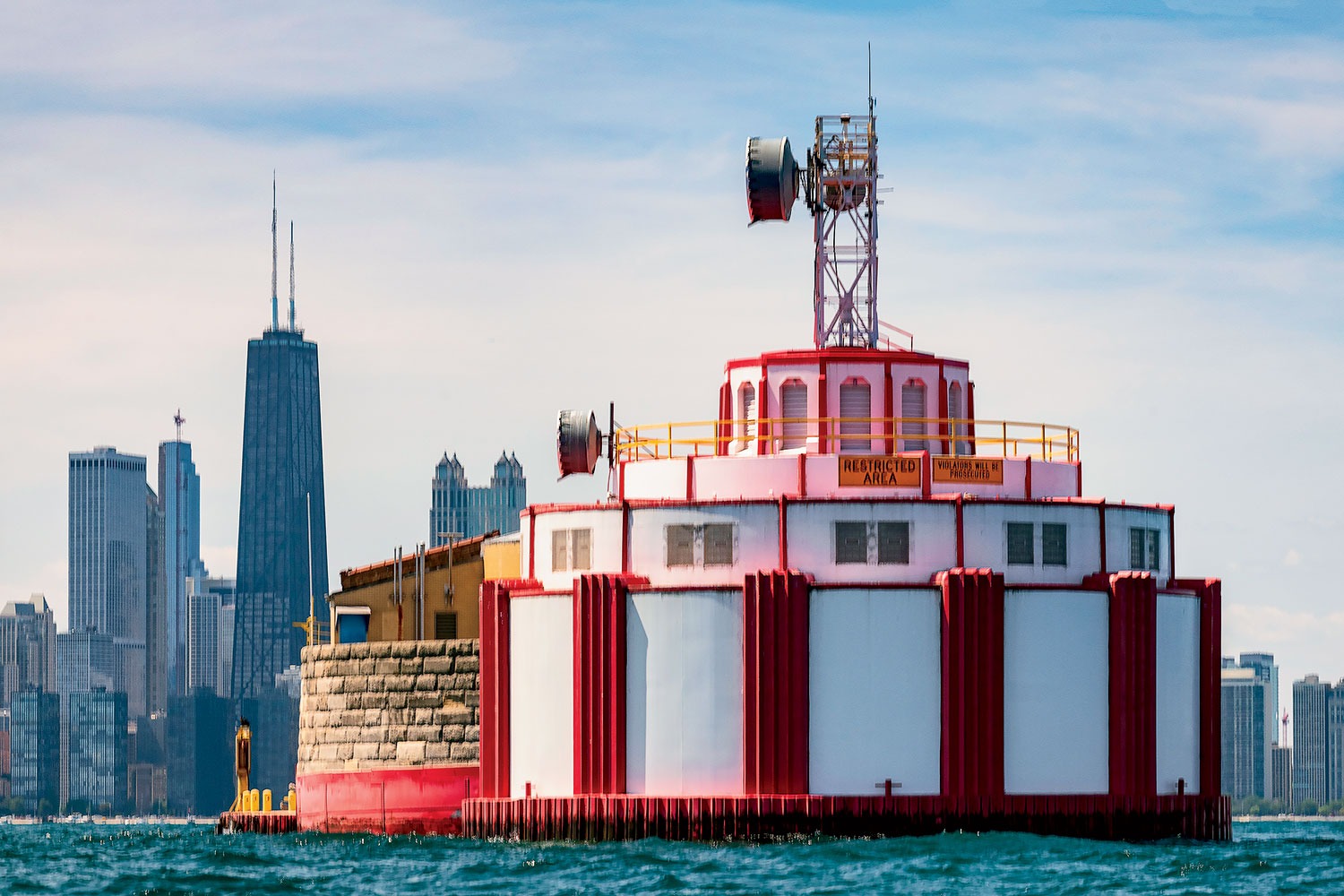When I first moved to Chicago and looked out over Lake Michigan, I had the same thought as many people: What are those big round buildings out there in the water? Oddly located grain silos? Drums for a giant?
They are the water intake cribs supplying Chicago with clean water.
Back before the Chicago River was reversed, the water close to the shore was fouled with raw sewage. Who wanted to drink that? The solution: Get clean water from several miles out.
“The cribs are basically straws located in the lake that suck water in from the cleaner part of the lake and bring it into the purification plants,” says Megan Vidis, director of media affairs for the Chicago Department of Water Management.
The first crib, completed in 1865 two miles out into the lake, sent water through a tunnel 60 feet below the lake surface to the Chicago Avenue Pumping Station at the historic Water Tower.
Over the years, the city built a total of nine. Six stand today. Two still supply Chicago with water, piping it to two purification plants. Two house security equipment and serve as temporary lodgings for staffers performing duties like ice removal. Two no longer function.
The city may demolish them. “We are exploring ways to safely and cost-effectively deal with the two decommissioned cribs,” Vidis says.
Preservation Chicago considers them iconic Chicago structures and opposes demolishing them. The group placed the cribs on its 2017 list of the city’s seven most endangered places.
Not only are they historically significant marvels of engineering, says Ward Miller, the group’s executive director, but they could be transformed by some visionary entrepreneur into stunning destinations, like restaurants offering crib-top cocktails and a view of the city from the middle of the lake.
“It would be as big a draw as Millennium Park — and an incredible source of revenue for the city,” he says.
Ward can only imagine what it’s like to be out there: Access to this crucial part of the city’s drinking water infrastructure is especially restricted. Almost no one outside the Department of Water Management has actually been to the cribs.
But I have.
On a gloriously sunny winter day in 1988, when I was a Tribune columnist, I rode the tugboat icebreaker James J. Versluis across snow-frosted water to the Harrison-Dever crib — actually a pair of interconnected cribs that replaced the first one built — to write about the crews who stayed out on the cribs to oversee maintenance.
It was a great chat with those guys about their one-week-on, one-week-off crib life. And I got to cross the narrow walkway between the two drums, suspended 18 feet over the water, Lake Michigan’s vastness glittering on all sides and the city skyline rising above the water in the distance.
The greatest show on earth.



